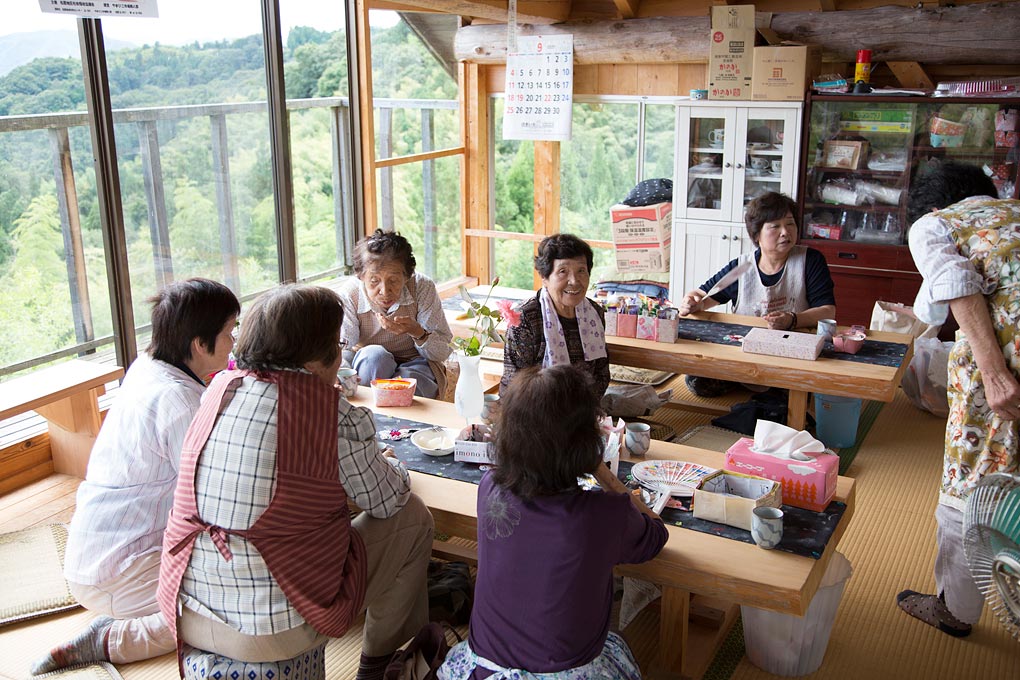Rural and local creation 13 / what is the difference between local creation and rural regeneration? Create a more integrated immigration support system
Share + 1 Tweet Email
One of the questions I have been asked most often these days is: what is the difference between the "local creation" introduced by the Executive Yuan and the "rural regeneration" promoted by the Council of Agriculture in recent years? Before answering this question, I usually take the experience of relevant policy development in Japan as the starting point.
Japan's local creation policy is based on previous policy tools.
Although 2015 is the first year of local birth for Japanese society as a whole, for many of the policy tools we are talking about, they have not emerged since 2015. For example, the hometown tax system was planned in 2008; the Regional Revitalization Cooperation team has been implemented since 2009; and the six-tier industrialization policy, which is most familiar to the people of Taiwan, is derived from the special law formulated in 2010.
I wonder if, given the above example, you will have a kind of "Oh, so it means a change of clothes" when you have just finished the first paragraph. Of course not. The case of Japan has two levels of meaning. First of all, from a general point of view, local creation has its own declaration of overall governance and superior structure. Under the framework of this national policy, various ministries will propose policy tools that can solve problems on how to achieve the vision of local creation.
In addition, for most policy planning in Japan, there is usually a process of rolling review and revision every five years, that is to say, even if a policy tool with the same name is formulated from the beginning to the local creation, it is usually adjusted in response to the needs of the policy.
Japan has set up a "local creation promotion payment fund" with an annual budget of 100 billion yen to encourage their respective management to carry out new undertakings such as increasing job opportunities, reversing population mobility, and revitalizing settlements, as well as existing related undertakings in various provinces. In 2016 alone, the total budget for local creation amounts to more than 1.000000008 trillion billion yen.


Japan's immigration policy attracts many urban couples to return to the countryside (upstream and downstream information photo)
Is it strange that Japan requires only five couples to move to KPI a year?
And because local creation is a policy umbrella with an overall view, we can further understand that in some parts of Japan, the formulation of KPI seems to be so shocking to Taiwanese, such as increasing the emigration of five couples. In terms of numbers, there are very few five couples, and perhaps it feels disproportionate in terms of the investment of resources. But as long as we carefully explore the value and significance presented in it, we will have a different experience.
First of all, let's put ourselves in the shoes of if you are one of the couples who want to move to the countryside, what are the influencing factors you consider? Is it the educational resources, medical resources and employment choices mentioned above? Wait, wait,
In addition, when a non-local couple is willing to emigrate to a certain rural area, what are the values or benefits that this will bring? They may have offspring in this place and improve the population of this place; their daily needs will create economic mobility in this place; more importantly, they will create new "relationship population" for this place. Their relatives and friends living out of town will have the opportunity to visit, travel and spend money in this place because of their emigration. Even emigrated.
So, when a local government proposes a KPI for five couples to emigrate? Do we still think it's weird?
Note: "related population" means that this kind of population has a deeper connection with the place than tourists, because they love a place or have a certain emotional connection to it, even if they do not live there now, they have considered that they will be willing to move when the conditions are ripe.
Special topic of Japanese Local creation │ Regional Revitalization team & people who emigrated to places
Share + 1 Tweet Email
- Prev

On the 6th of the Spring Festival enterprise on-the-spot recruitment, the bamboo market will release 1273 job openings for the first time.
The Hsinchu Municipal Government, in cooperation with the Hsinchu Employment Center of the Peach Bamboo Seedling Branch of the Labor Development Department of the Ministry of Labor, will hold an on-site recruitment activity for Hsinchu enterprises at the Eastern District Office on March 6. 29 high-quality manufacturers will be invited and 1273 jobs will be released.
- Next

Rural and local creation 12 / Local creation is a larger scale of community construction, which requires deeper and wider social mobilization.
Rural and local creation 12 / Local creation is a larger scale of community construction, which requires deeper and wider social mobilization.
Related
- A course of planting techniques and methods on how to grow carrots
- How to plant the latest tulips?
- Is it better to pick tea in the morning or in the afternoon? When is the best time for tea to be picked? what is the third or fifth tea?
- Launch Yuanxiao Happy combination Haocha + Tea Yuan healthy Taste
- Penghu Tourism "Fireworks 20 Parade with You"
- 2022 West Lake Happiness holds "Digital Revitalization Voucher" and draws iphone13 and laptop.
- Banqiao Fuzhou social houses are designed to change start-up combined with police elimination to create a safe and livable environment
- The convenient measure of "mechanical weeding" in Xinbei has been abused and the Agriculture Bureau has imposed heavy penalties on the illegal land consolidation.
- Changgeng University Joins Hands with Four Memory Factories to Rescue Memory Talent Shortage
- The list of Taiwan's top 100 MVP managers is listed by the Director-General of the Farmers' Association of Sanxia District.

